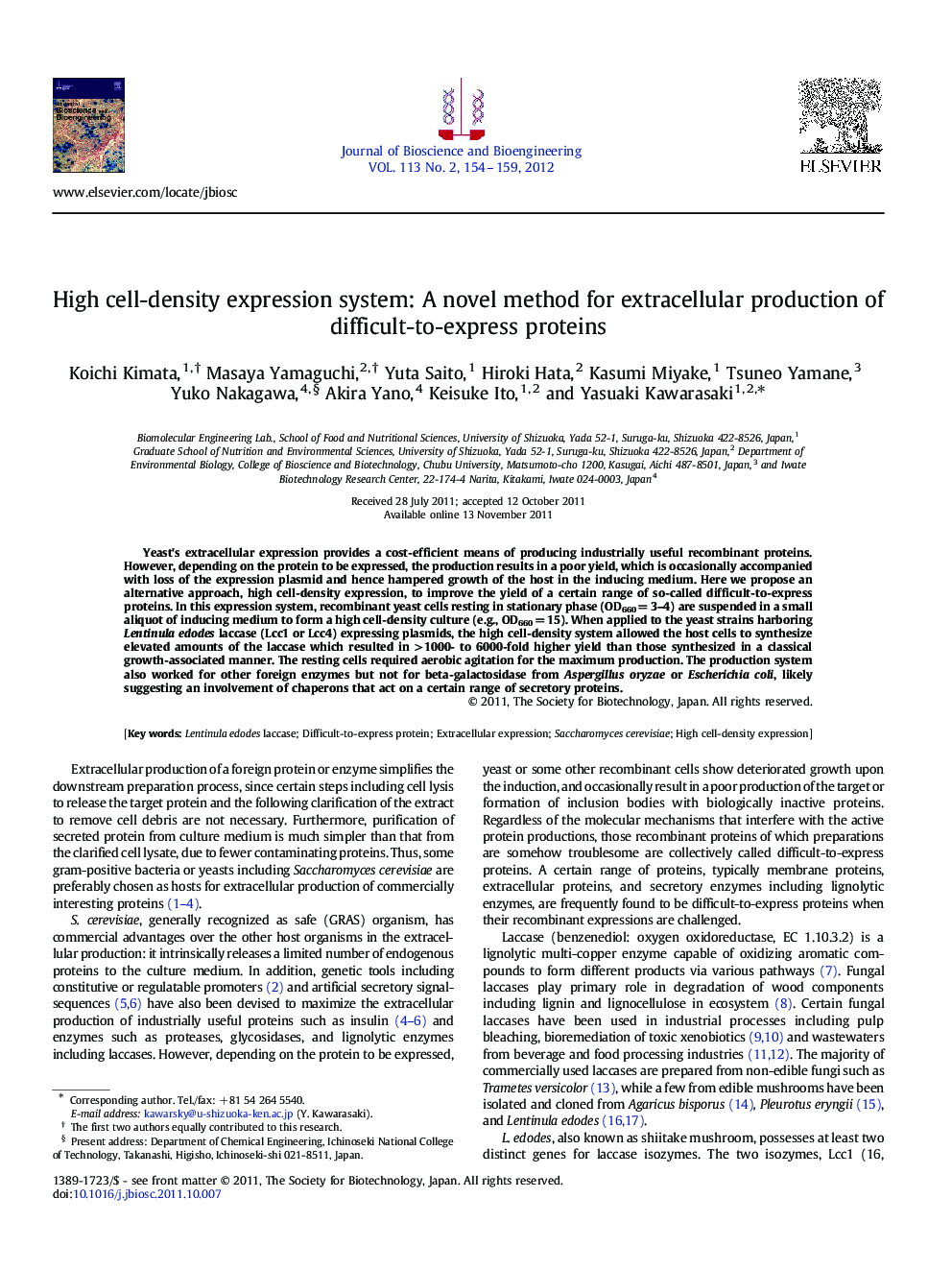| Article ID | Journal | Published Year | Pages | File Type |
|---|---|---|---|---|
| 21369 | Journal of Bioscience and Bioengineering | 2012 | 6 Pages |
Yeast's extracellular expression provides a cost-efficient means of producing industrially useful recombinant proteins. However, depending on the protein to be expressed, the production results in a poor yield, which is occasionally accompanied with loss of the expression plasmid and hence hampered growth of the host in the inducing medium. Here we propose an alternative approach, high cell-density expression, to improve the yield of a certain range of so-called difficult-to-express proteins. In this expression system, recombinant yeast cells resting in stationary phase (OD660 = 3–4) are suspended in a small aliquot of inducing medium to form a high cell-density culture (e.g., OD660 = 15). When applied to the yeast strains harboring Lentinula edodes laccase (Lcc1 or Lcc4) expressing plasmids, the high cell-density system allowed the host cells to synthesize elevated amounts of the laccase which resulted in > 1000- to 6000-fold higher yield than those synthesized in a classical growth-associated manner. The resting cells required aerobic agitation for the maximum production. The production system also worked for other foreign enzymes but not for beta-galactosidase from Aspergillus oryzae or Escherichia coli, likely suggesting an involvement of chaperons that act on a certain range of secretory proteins.
